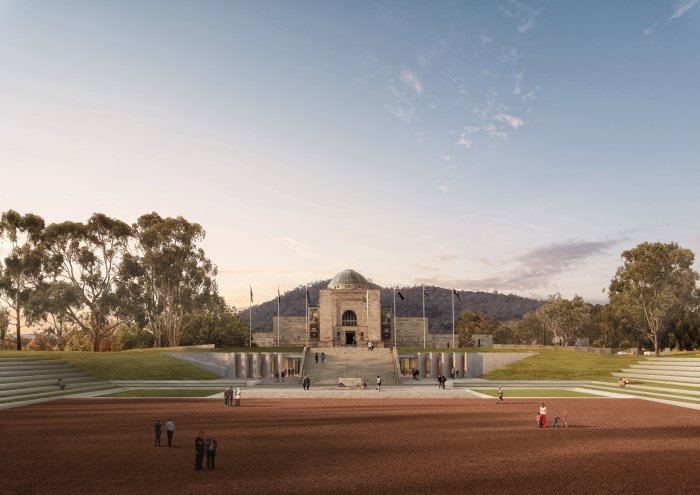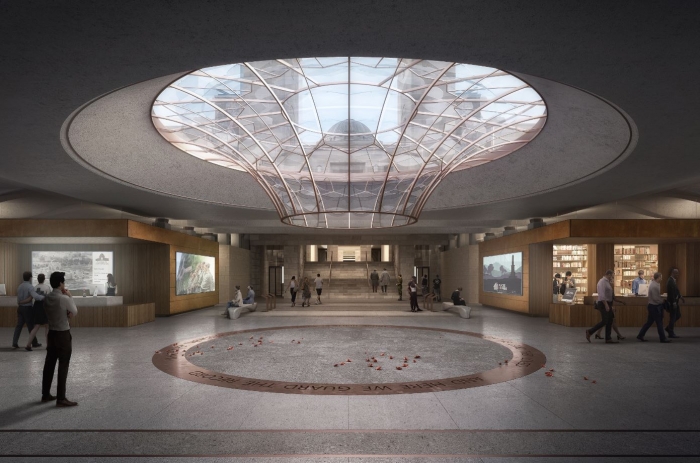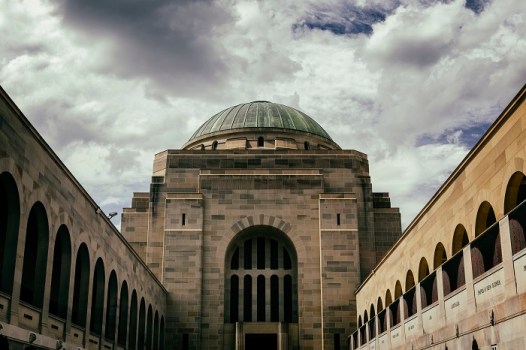
The proposed $500 million War Memorial redevelopment is an extravagant waste of taxpayer money “conceived in backrooms by a few powerful individuals desperate to leave a bricks and mortar legacy”, a parliamentary committee has heard.

Prime Minister Scott Morrison announced the $498 million investment in the redevelopment last November, saying it would allow the Australian War Memorial to display more of its collection and tell stories from recent years in Afghanistan, Iraq, the Solomon Islands and East Timor.
The redevelopment will increase visitor areas by 83 per cent and include a new temporary exhibition space, research facilities, a theatre and a functions space.
‘Slipshod and arrogant’
But convener of the non-profit Heritage Guardians Foundation, Dr David Stephens, told a hearing the project has avoided scrutiny and cut corners in rules applying to capital works.
“This this has been a slipshod and arrogant exercise in public administration—a deeply flawed process”, he told the Parliamentary Standing Committee on public works on July 14.
He said claims of the benefits of expanding the site were a smokescreen for creating space to display planes, helicopters and other retired military equipment.
“These planes, helicopters and armoured vehicles will be tourist attractions, big toys for the boys and prominent advertisements for the companies that make them,” he said.
“This feature of the memorial’s plans was put in place at a time when its director also had an unpaid gig lobbying for an arms manufacturer and went on to paid employment with another arms manufacturer,” he said referring to the them director Brendan Nelson who championed the redevelopment.
Professor Stephens said the $498 million intended for this project should be spent on direct benefits to veterans and their families and other cultural institutions.
“In the face of numbers of homeless veterans, veterans suiciding and veterans having difficulty transitioning to civilian employment, in the face of unmet needs in all of these areas, spending $498 million on this project is truly an obscenity,” he said.
ANU military historian Professor Peter Stanley said proponents of the redevelopment had presented a “mendacious and misleading case” and said claims it would have therapeutic benefit for veterans was snake oil.
“This view … is the museum equivalent of hydroxychloroquine. I’m appalled at this slapdash and, frankly, unprofessional proposal.
“It’s a very one-sided, very narrow, very specialised—almost old boys network—type of process. The rest of the country is finally catching up now,” he said.
Former War Memorial Director Major General Steve Gower said the project was seriously flawed and had failed to properly consider heritage matters.
“I believe the project as proposed is an extravagant waste of taxpayers’ money,” he told the committee.
Redevelopment will celebrate service and tell stories, says AWM
The AWM’s current director, Matt Anderson said Australian War Memorial was never intended to be static.
He said a quarter of a million Australians have deployed overseas to conflicts and peacekeeping operations over the last 75 years but the current design means only about two per cent of gallery space can be used to celebrate their service and tell their stories.
“Through the development, the memorial seeks to become a place where all Australians can see a reflection of themselves, and not just the dominant historical narrative but a contemporary one: of women in the front line; of peacekeepers; of a multiethnic and multilingual Defence Force; and of the Indigenous contribution to defending country and culture,” he said.
Mr Anderson said the proposed development had undergone rigorous analysis to ensure it provided appropriate returns on taxpayers’ investment.
“The project will create jobs. It will employ veterans. It will drive local, interstate and, eventually, international visitation,” he said.
Chairman Kerry Stokes also defended the plans, telling the committee: “We want to do nothing but improve it. We want to do nothing but make it more accessible.”

The development includes a new southern entrance, refurbishment of the main building, a new Anzac Hall connected to the main building via a glazed link, an extension to the Bean Building, a new research centre connected to the Poppy’s Café forecourt, and public realm works.
The works will be carried out in stages over nine years.
The AWM says more than one million people visit the Memorial every year to honour the nation’s servicemen and women and learn about their experiences in war, peacekeeping, and humanitarian operations.
“The time has come to modernise and expand our galleries and buildings so we can tell the continuing story of Australia’s contemporary contribution to a better world through the eyes of those who have served in modern conflicts, connecting the spirit of our past, present, and future for generations to come.”
The Department of Agriculture, Water and Environment will undertake its own internal processes before making a final decision on the development, expected to be by early October.
Comment below to have your say on this story.
If you have a news story or tip-off, get in touch at editorial@governmentnews.com.au.
Sign up to the Government News newsletter

The money would be better spent on the LIVING veterans!While you focus on war you are more likely to get war.!Focus on peace instead.!There is plenty of space in the present area if you must store old relics.